Not since 2016 had we seen an exhibition that chronologically traced the long biography and artistic production of Francesco Hayez (Venice, 1791 - Milan, 1882): until February of that year, in fact, the Gallerie d’Italia in Piazza Scala in Milan housed the Hayez monograph, curated by Fernando Mazzocca, which from the years of his neoclassical training between Venice and Rome, in the studio of Antonio Canova, led visitors to the artist’s emergence in Milan as a protagonist of Romanticism, the culmination of which should be considered his most famous masterpiece, Il Bacio, present at the seven-year-old exhibition in all three versions. Now, years later, it is Turin that is picking up the baton of that exhibition: curated by Fernando Mazzocca and Elena Lissoni, until April 1, 2024, the Galleria Civica d’Arte Moderna e Contemporanea is hosting Hayez. The Workshop of the Romantic Painter, which, through ten sections and proceeding in chronological order, aims to accompany the public, still starting from the years of his neoclassical training between Venice and Rome, through Hayez’s life and creative activity, up to the last years of his production. And between these temporal boundaries, the variety and breadth of his thematic repertoire, from paintings with historical subjects, to portraits, nudes, allegorical, mythological and sacred subjects, always mastering style and technique, is held to be emphasized.
Of the versions of The Kiss, not a single one is on display in the Turin exhibition, nor is the very famous Last Kiss between Romeo and Juliet from Villa Carlotta in Tremezzina (lent instead to the exhibition at the Accademia Carrara in Bergamo, Tutta in voi la luce mia. Painting of History and Melodrama, curated by Mazzocca himself and Maria Cristina Rodeschini, along with other works by Francesco Hayez); recalling the Villa Carlotta painting, however, is a Last Kiss between Romeo and Juliet from a private collection. However, the review sees masterpieces such as the Portrait of Carolina Zucchi in Bed (The Sick), from the collection of the GAM in Turin, the St. Mary Magdalene Penitent in the Desert from the Franco Maria Ricci Collection, the Penitent Magdalene from the GAM in Milan, The Council to Vengeance from the collections of the Princes of Liechtenstein, the Laocoon from the Brera Academy, theSecret Accusa from the Musei Civici del Castello Visconteo in Pavia, The Meditation from the Musei Civici di Verona - Galleria d’Arte Moderna Achille Forti, and Tamar di Giuda from the Musei Civici di Varese.
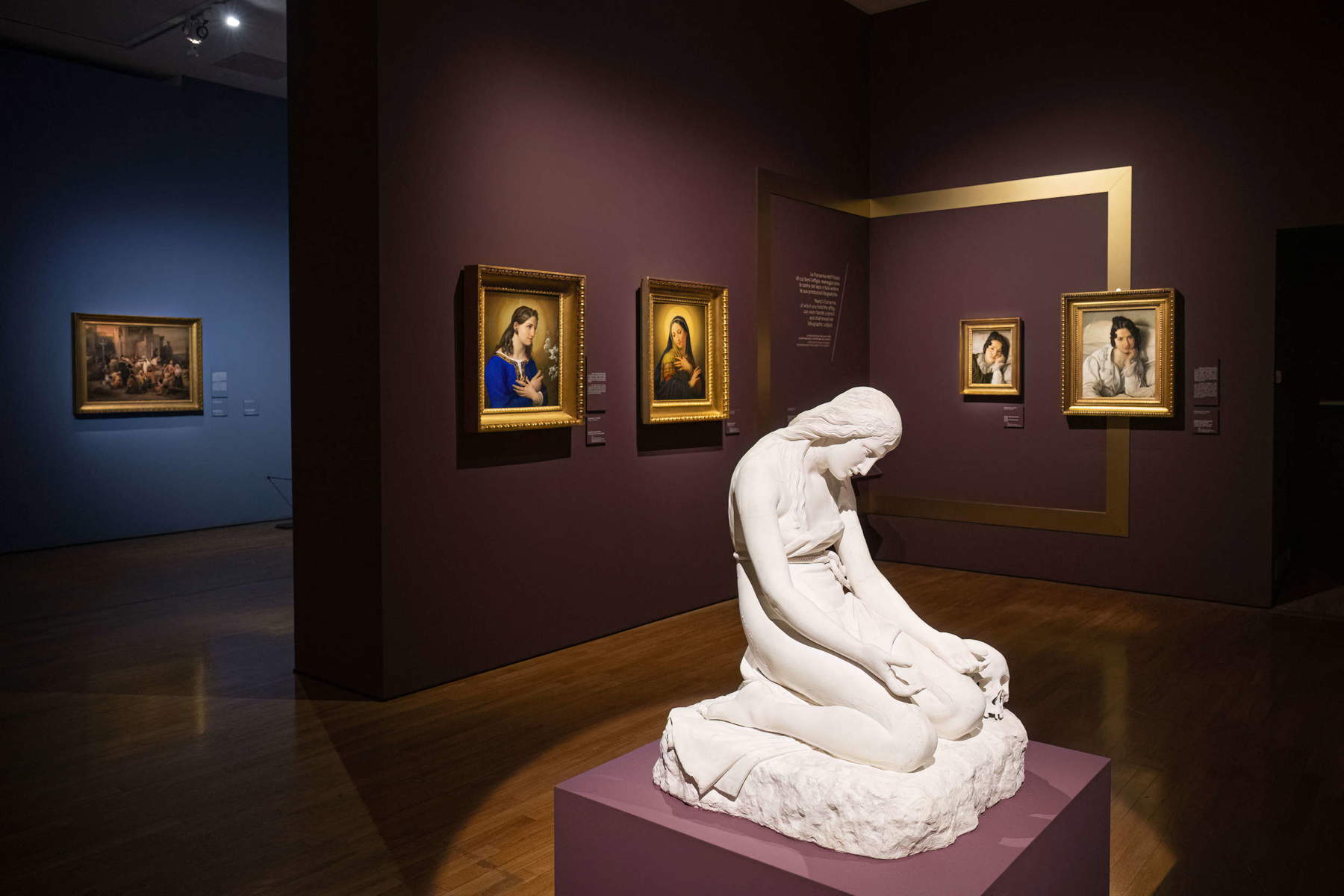
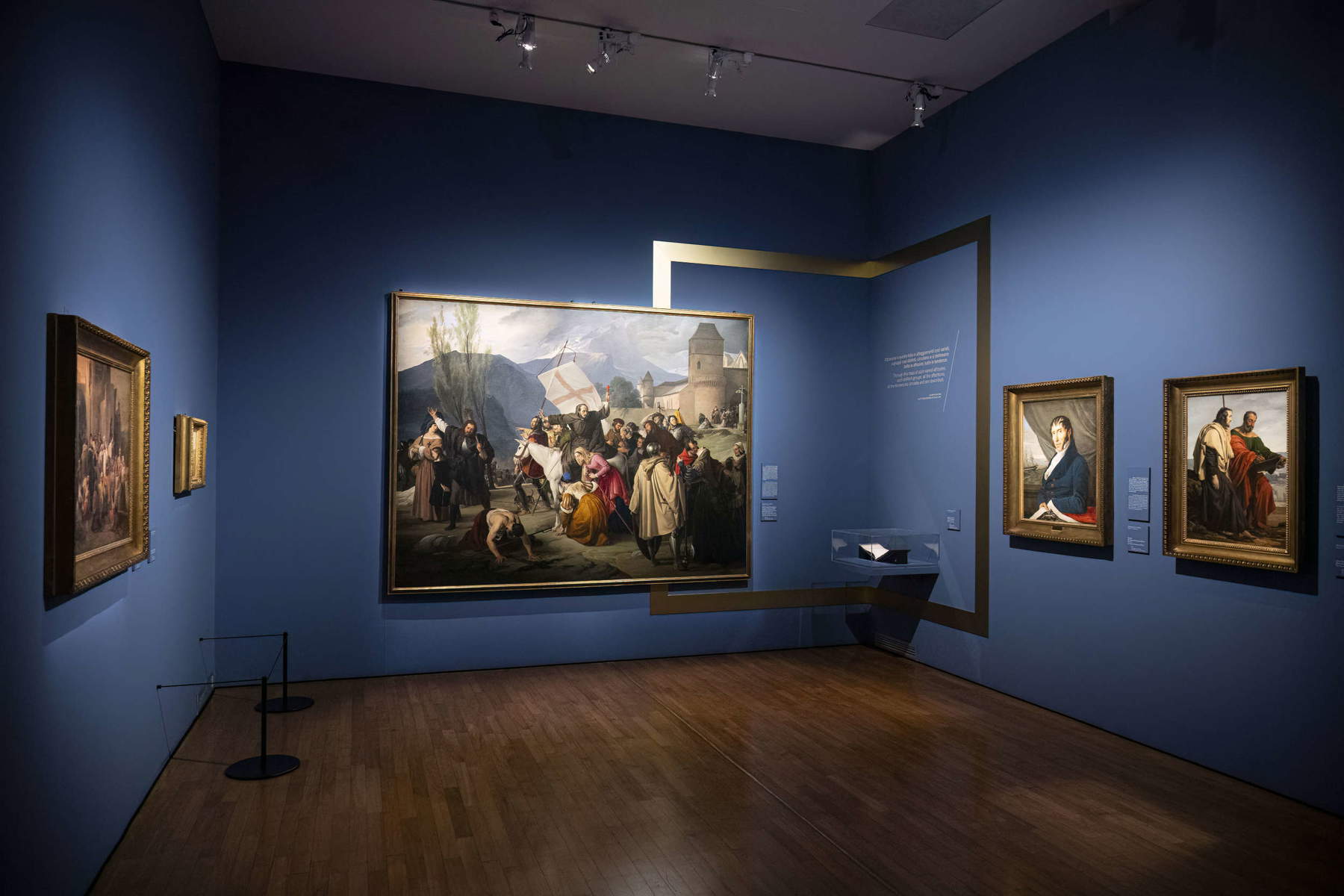
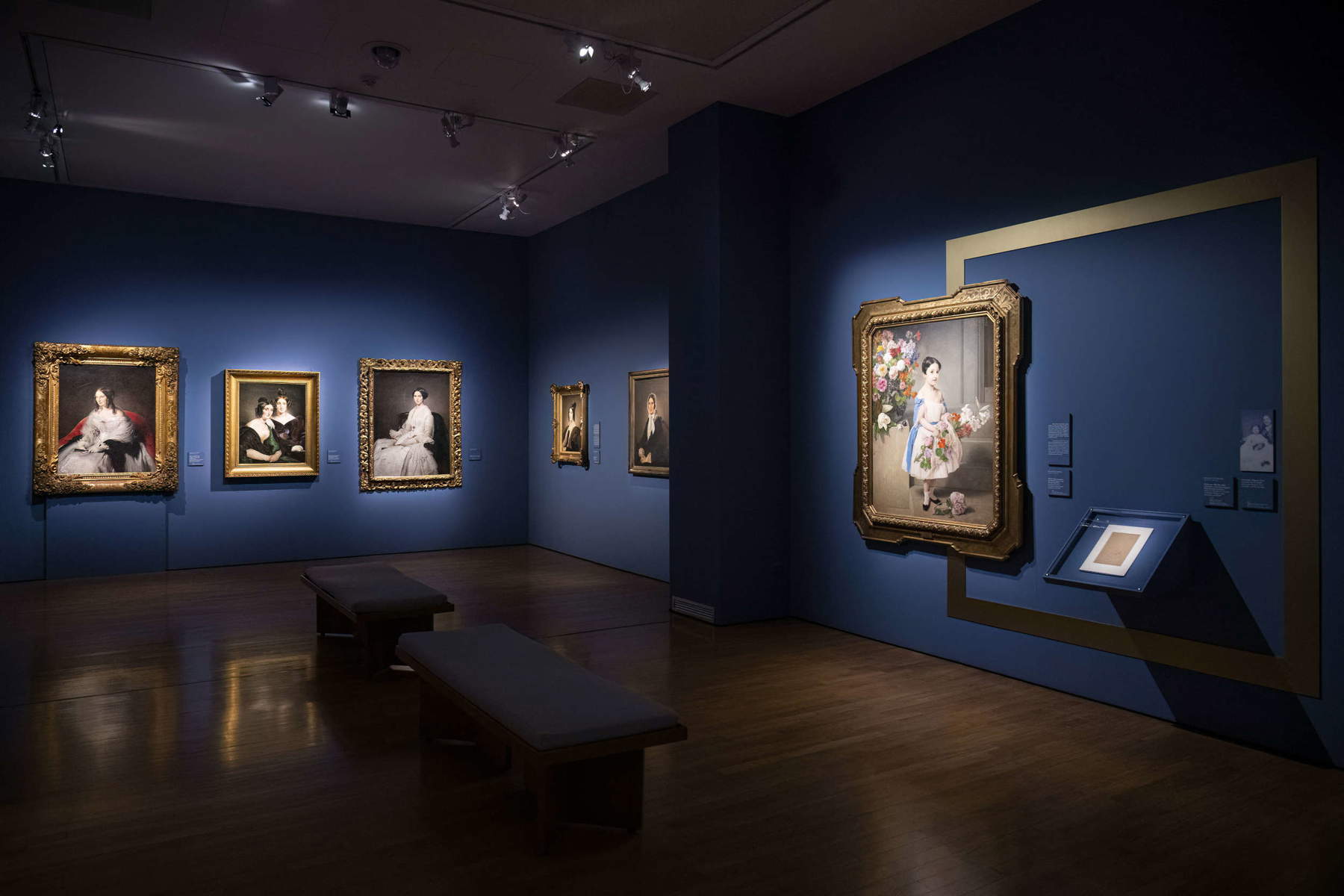
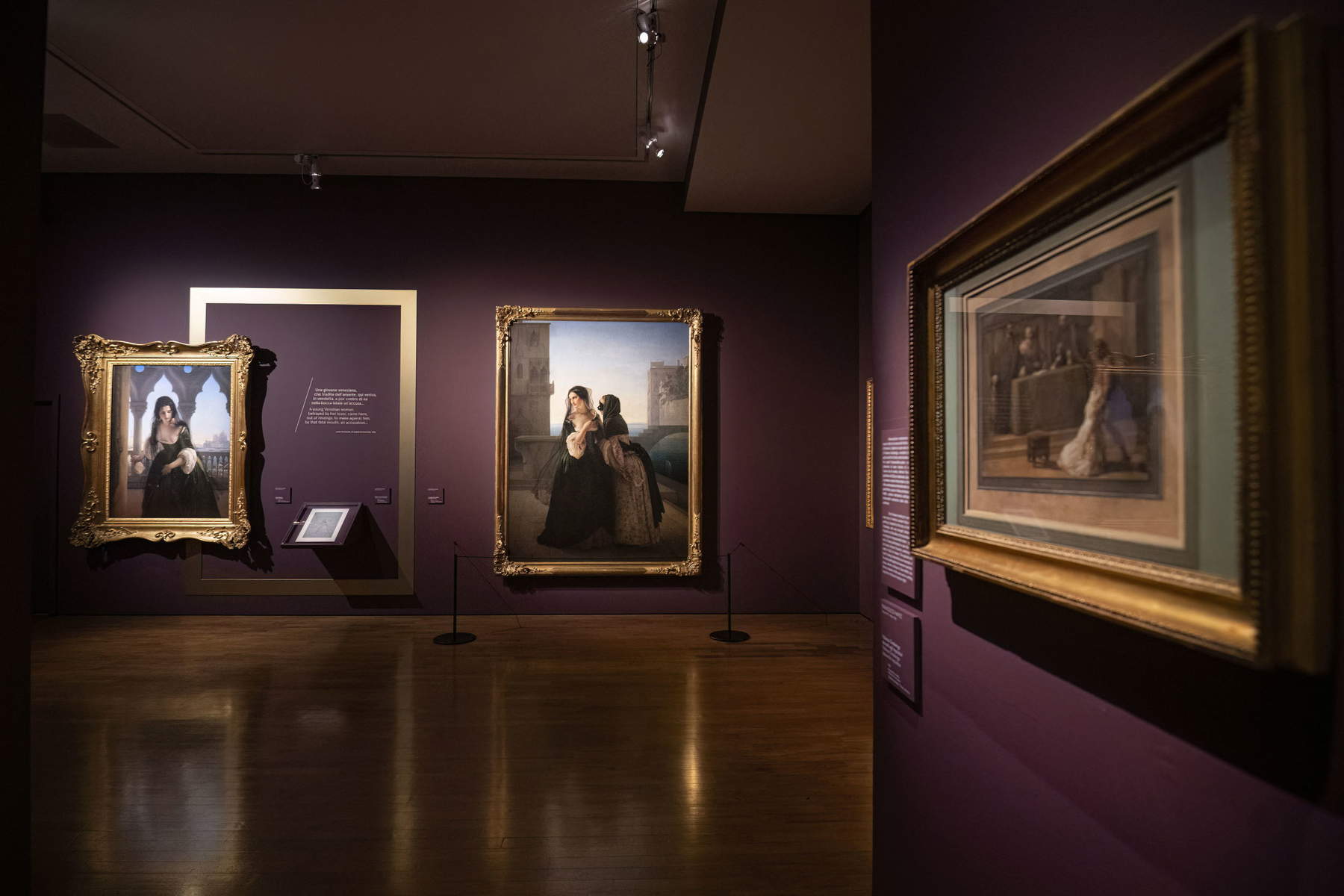
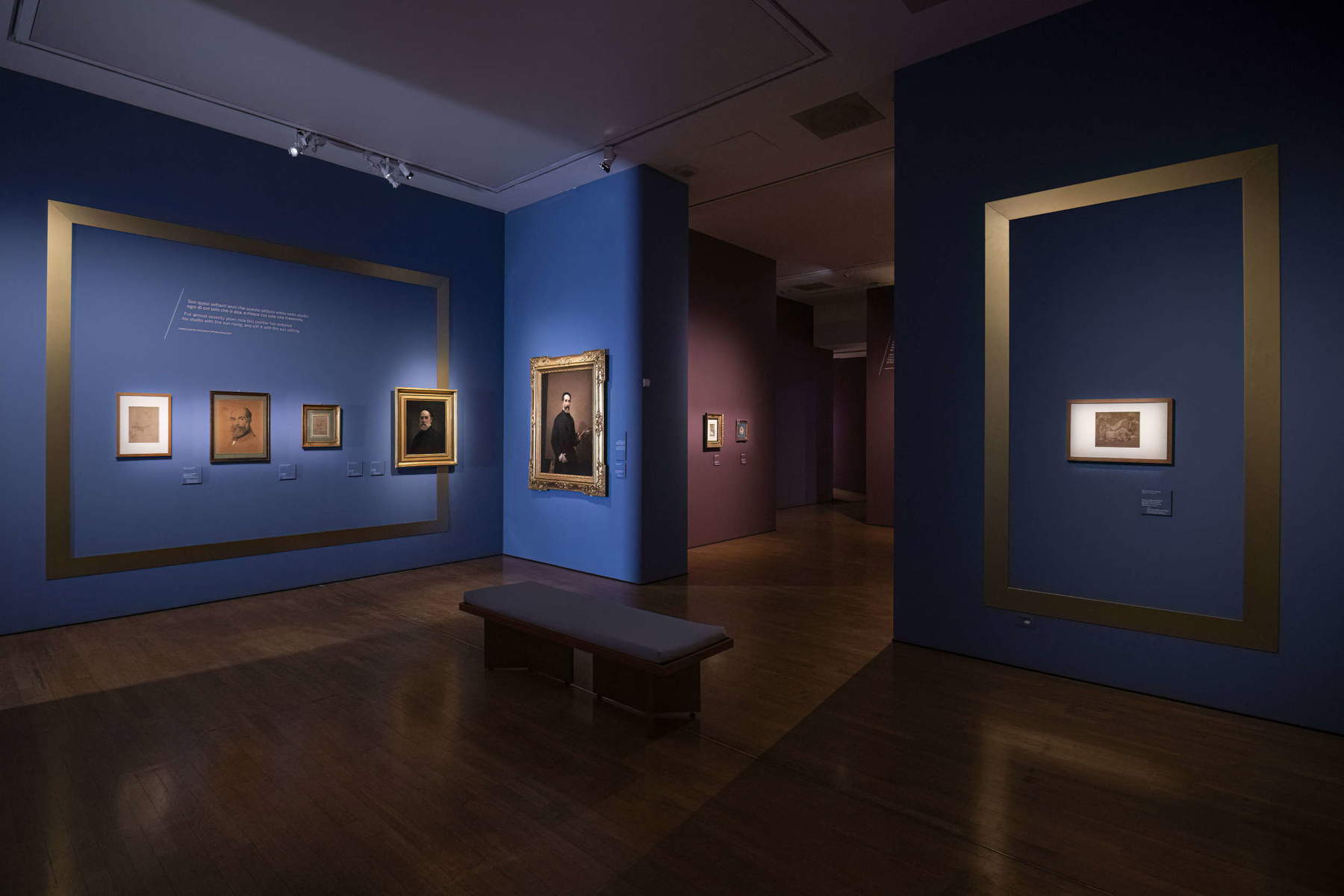
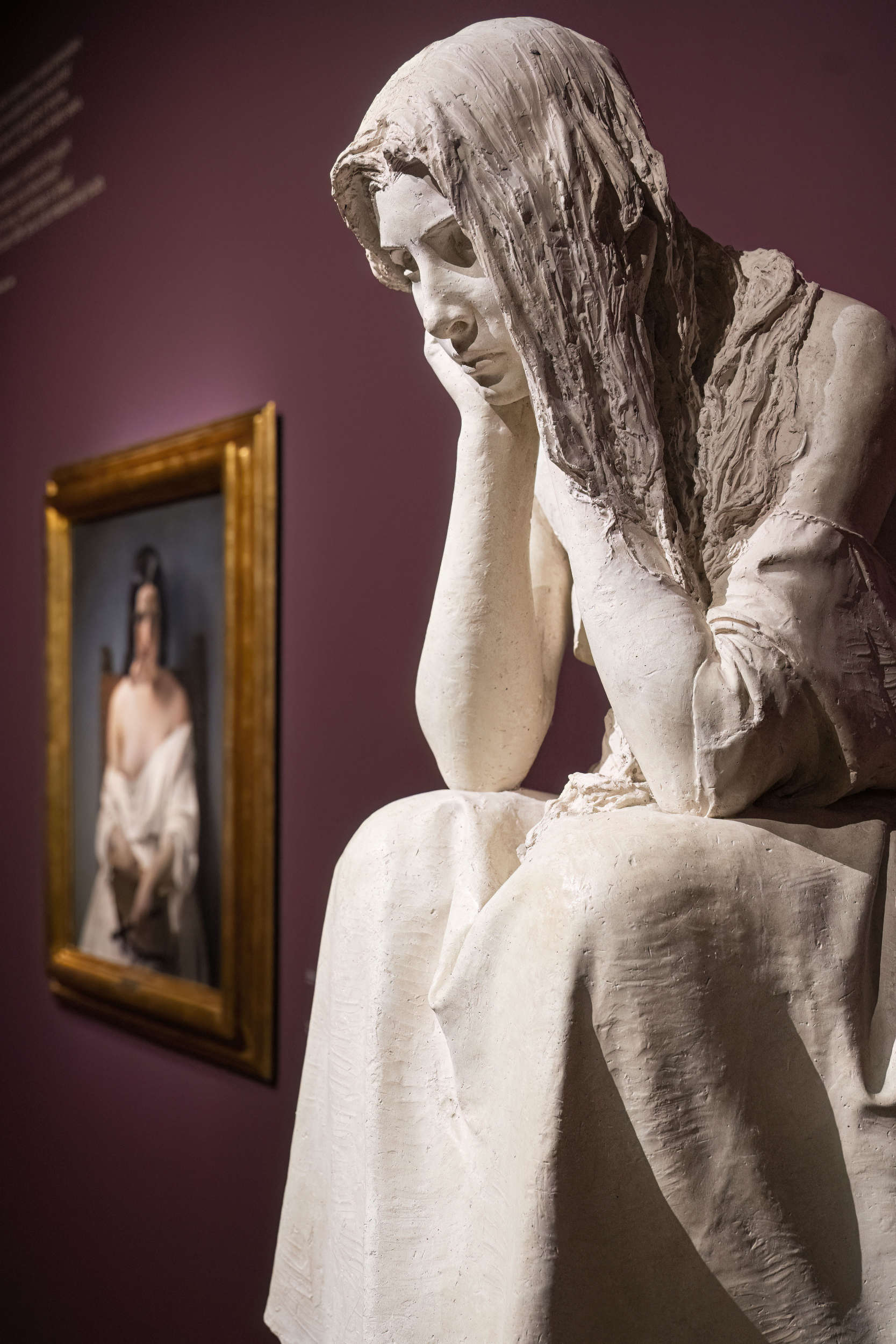
In addition, the paintings, many from private collections, have been juxtaposed in the exhibition with many of their preparatory drawings, mostly from theBrera Academy of Fine Arts, where Hayez was a professor of painting for forty years. It is precisely in this juxtaposition of paintings and drawings (about fifty), the latter often made with rapid gestures in the manner of visual notes to be used later in the more refined and detailed compositions, that the novelty of the Turin exhibition lies, since, as the title of the exhibition foretells, it gives visitors the opportunity to follow and understand the creative process of the artist’s works, projecting them into his atelier. An extraordinary testimony to Hayez’s working method , which gave drawing an important role and did not exclude afterthoughts.
An example of this painting-drawing juxtaposition is immediately encountered in the first room, the one dedicated to Hayez’s training and beginnings, who moved from Venice to Rome to have more opportunities to frequent important cultural circles, which he found in fact in the studio of Antonio Canova, where he had the opportunity to immerse himself in the last horizons of Neoclassicism: the large Laocoon painting from the Brera Academy of Fine Arts is in fact here flanked by the Studio d’insieme for the painting and the Studio for Laocoon’s head, the latter also from the Brera Academy. Hayez presented the work at the Great Painting Competition held by the Brera Academy in 1812 and it was a huge success, even though it won an ex-aequo with Andrea Appiani’s pupil Antonio De Antoni, but what is important is that, in the course of the elaboration of this youthful masterpiece, the artist set his own working method, which is based on drawing and preparatory studies of individual details to arrive at the overall composition. Also on display in the same room is theTriumphant Athlete of 1813, in which Canova’s models are clearly recognizable, and which Hayez submitted to the Anonymous Maecenas competition at the Accademia di San Luca, where the work in the exhibition comes from.
But even more significant for the immense amount of work that required dozens of preparatory drawings and studies is the monumental canvas of La sete patita dai primi Crociati sotto Gerusalemme (The Thirst suffered by the first Crusaders under Jerusalem), which the artist executed on commission from King Charles Albert for the Royal Palace of Turin, where it can still be admired. Its realization took nearly two decades of work and study, from 1833 to 1850; indeed, the canvas is considered one of Hayez’s most ambitious undertakings, both in terms of its size (363 x 580 cm) and its theme, one of the most sensational episodes of the Crusades inspired by Tommaso Grossi’s poem I Lombardi alle Crociate , from which Giuseppe Verdi’s melodrama of the same name is also derived. Hayez was able to give form in painting to this episode of Christendom, when the Christian army found itself “in the grip of all the horrors of thirst under a sky of fire” (Joseph-François Michaud, History of the Crusades, 1812-1822), while exalting the suffering and heroism of women and men. To this long artistic endeavor, the exhibition devotes a special focus section, where six studies are displayed, drawings that analyze particular figures and details of The Crusaders’ Thirst, accompanied by the overall composition to show the exact position of a particular detail within the overall picture. The crusade theme is also found in a painting in the third section, devoted to the great history painting that Hayez undertook from the late 1820s. It is the painting, admired by Stendhal who saw it in the artist’s studio, which depicts the preaching of the First Crusade by Peter the Hermit, who went through towns and villages with crucifix in his hand riding a white mule. The 1827-29 painting aroused much enthusiasm because it could be interpreted in reference to thecurrent political events of the time, the fate of the nation, and the need for national redemption; an interpretation deliberately reinforced by the presence in the painting of portraits of contemporaries, including Hayez himself. As significant are the two preaching apostles who dressed in the colors of the tricolor refer to the Italian patriotic cause. The struggle between Greeks and Turks, thus another historical theme interpreted in a current political key, is instead represented here by I profughi di Parga (from Canova Fine Arts): the city on the Greek coast of the Ionian Sea was in fact handed over in May 1817 by the British government to the Ottoman Empire, a fact that forced the inhabitants of the Greek city to abandon their land and provoked a decisive mobilization by intellectuals in Europe.




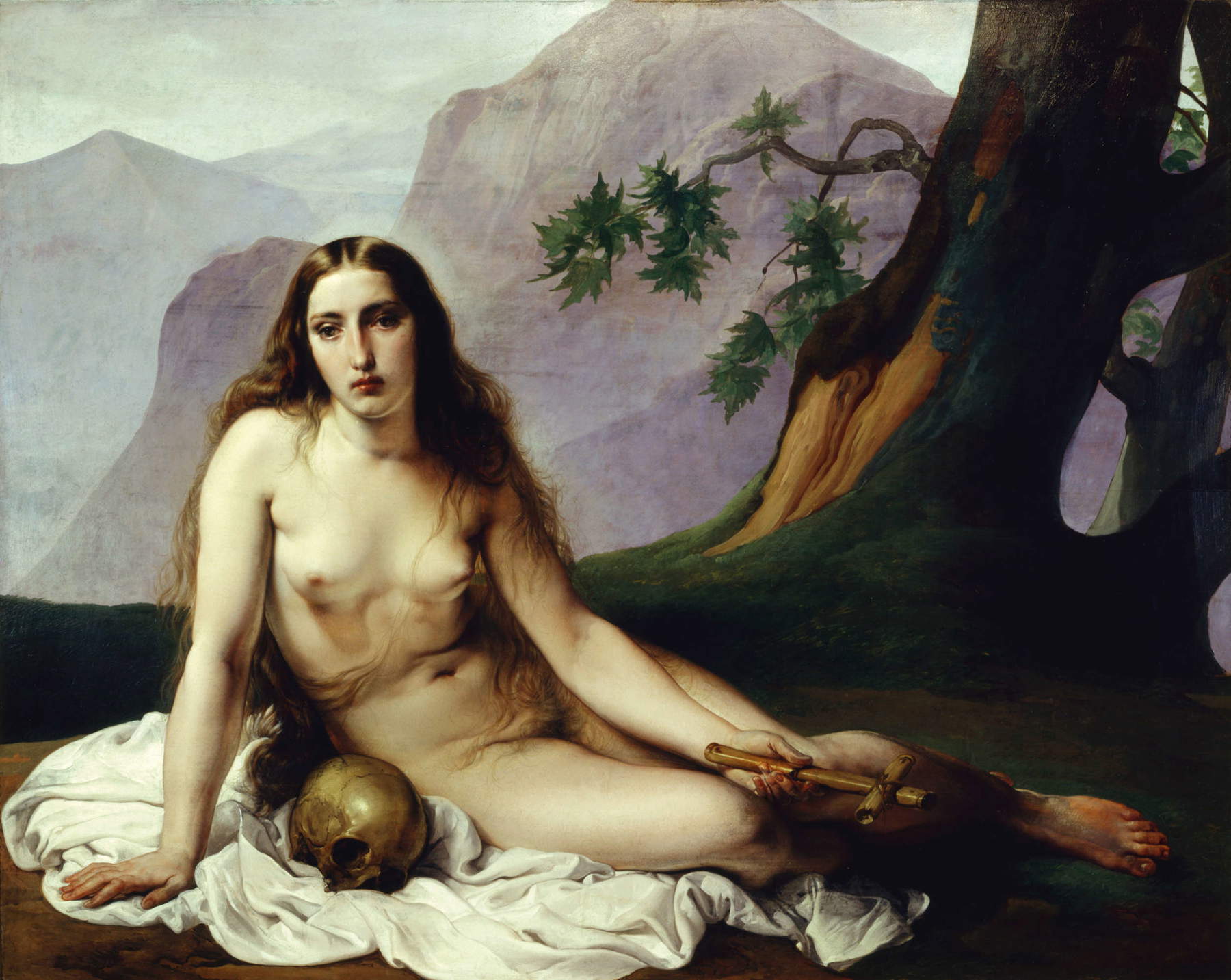
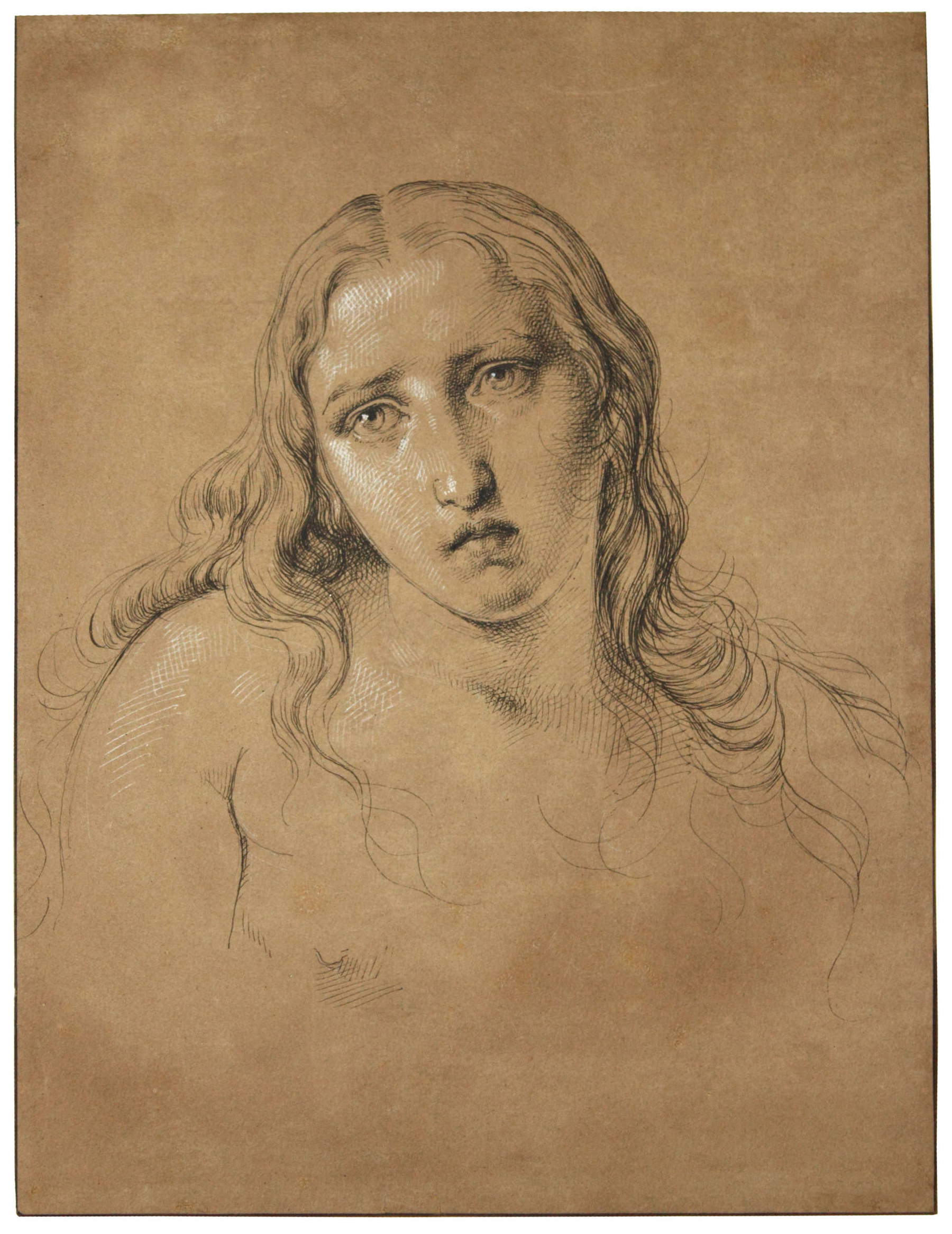
Returning to the second section devoted to the emergence of Romanticism with the artist’s move to Milan and the exhibition at the Brera Academy of Pietro Rossi in Pontremoli (not in the exhibition), which marks the final transition from Neoclassicism to Romanticism, a large room opens in the center of which is placed the plaster of Canova’sPenitent Magdalene, to which are answered, placed on an entire wall, by Hayez’s two Penitent Magdalene from the GAM in Milan and the Franco Maria Ricci Collection, accompanied by preparatory studies. It was, however, with the Count of Carmagnola that Hayez’s definitive consecration as a Romantic and national painter took place, one who became an interpreter of Risorgimento values and who favored the rendering of affects and drama over academicism. The 1821 work was destroyed during World War II, and the preparatory study is on display. Part of the room, however, is devoted to portraits of Carolina Zucchi, a young lithographer, model and Hayez’s lover. She is seen in a portrait flanked byFrancesco Hayez’s Self-Portrait at the age of thirty-one; she is seen in two portraits in bed, including the one called L’Ammalata which is part of the collection of the GAM in Turin, and in a study of the latter masterpiece; she is then seen in the tender female face of theAngel Announcer and also in the likeness of a penitent Magdalene. In fact, Zucchi, who belonged to a bourgeois family, lent herself to him as a model for many paintings in the 1920s, and the painter, thanks to her and his acquaintances in the cultural world, got to know many artists and musicians, such as Vincenzo Bellini and Gaetano Donizetti.
The exhibition then continues in its fourth section with romantic heroines, at the center of troubled stories and overwhelming passions that often have fatal outcomes. The fulcrum of this strand is the aforementioned Kiss, which also embodies the sentiment that had accompanied the birth of united Italy, but as already stated none of the three versions was shown at the Turin exhibition; instead, there is depicted the sad affair of Imelda de’ Lambertazzi set in the Bologna of 1273: in fact, in the painting we can already glimpse behind the doorway the brothers of Imelda, who belongs to a Ghibelline family, ready to lash out at her beloved Bonifazio, of the Guelph Geremei family. And also the love affair between Louis XIV and Mademoiselle de La Vallière: the painting depicts the moment when the Sun King penetrates the convent where Mademoiselle de La Vallière had taken refuge when she left the court (she was one of the king’s great favorites) to bring her back to the palace.
Throughout his long career Hayez was also a great portraitist, as evidenced by the next section, which is characterized by female portraits that mixpsychological introspection with detailed rendering of clothing and hairstyles; note the almost photographic rendering of the Portrait of the Contessina Antonietta Negroni Prati Morosini as a child surrounded by flowers of all kinds. Expressing instead sensuality and at the same time enigmaticity are the female protagonists of L’Accusa segreta and Il consiglio alla vendetta, on display placed side by side and accompanied by preparatory drawings, forming part, together with La vendetta di una rivale (whose current location is unknown), of a triptych devoted to thelate Romantic theme of revenge for amorous reasons and set in the noble palaces and streets of Venice.
Other themes and subjects were tackled by Hayez in the course of his production, such as the heroic nude (represented here by the preparatory study for the Samson) and the bathers, sensual female figures that together with the odalisques and nymphs gave the painter the opportunity to confront new experiments related to the pictorial rendering of the body. An example of this is the Bath of Nymphs, which, despite its title referring to the mythological theme, depicts a scene contemporary to the painter, as suggested by the nineteenth-century clothes left in the foreground. As for the odalisques, on the other hand, they gave a way to express a taste for the Orient and the exotic, as well as to experiment with new forms of expression related to seduction and the rendering of the female nude. So do the three biblical heroines exhibited here, namely Tamar of Judah, Ruth and Rebecca.
We approach the conclusion with the penultimate section devoted to the last years of Hayez’s career: he abandoned history painting and continued to deal with the theme of the nude, with greater attention to realism and rendering of light. The three side-by-side paintings of the female nude from the back, the Bather and the Odalisque bear true witness to this. But it is to theself-portrait that he devotes further attention and study: these are portraits tinged with melancholy and characterized by greatintrospection, but at the same time intended to assert proudly his own role and his lifelong profession, that of painter.
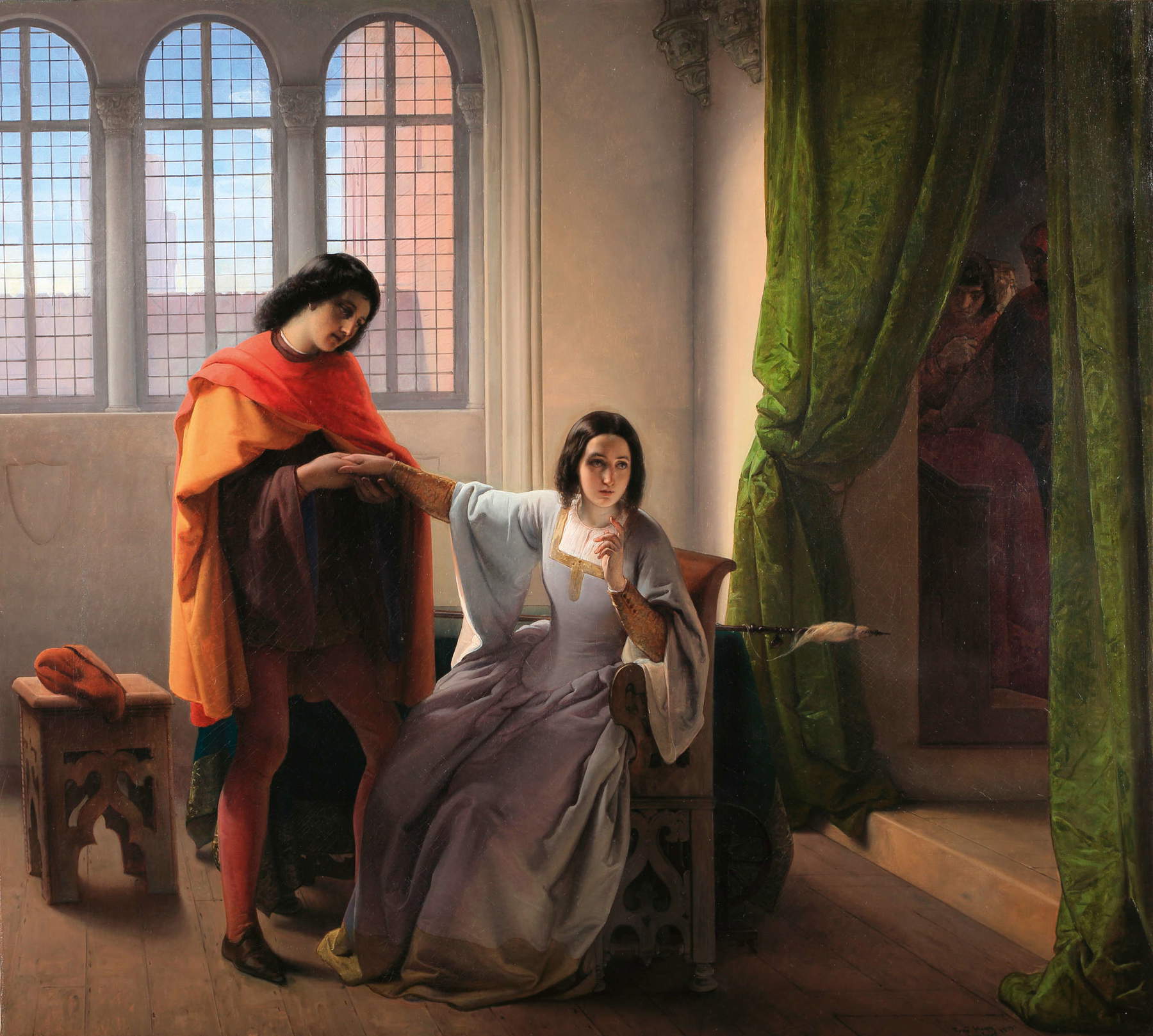





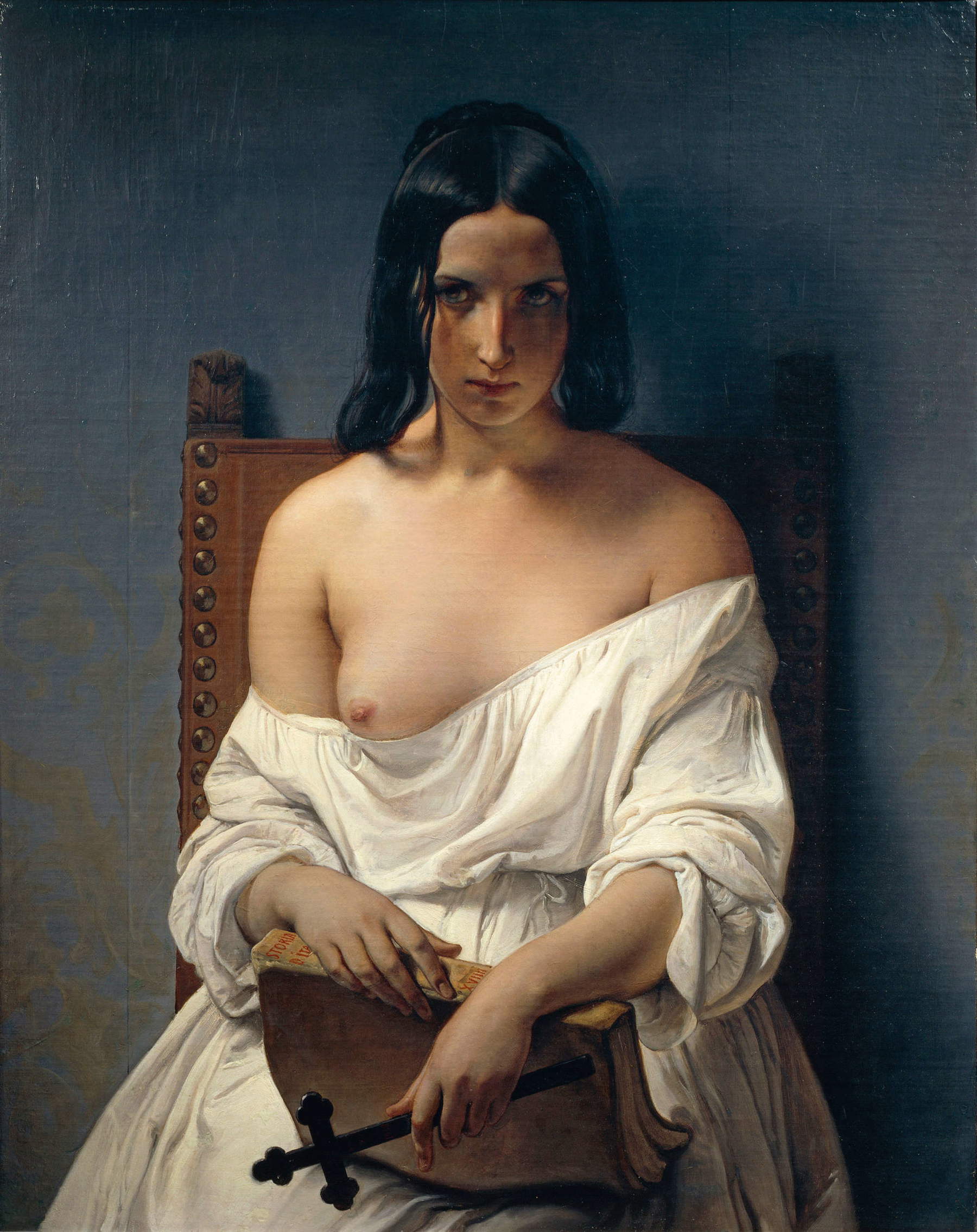
The exhibition closes with a beautiful comparison between Francesco Hayez’s La Meditazione and Vincenzo Vela’s La Desolazione, born of disappointment with the outcomes of the Risorgimento experience but marked by a glimmer of hope. A young and sensual woman with an exposed breast symbolizes the “beautiful and lost” homeland, the Italy that continues to nurse its children and dream of a better destiny.
Thus ends, with this evocative glimpse, the exhibition project dedicated to Hayez at the GAM in Turin. A must-see exhibition, even if, as mentioned, several of his most significant works are missing, because it nonetheless gives the visitor an idea of the entire artistic journey that the painter accomplished, who was a great portraitist, an excellent interpreter of historical and Romantic painting, but also an extraordinary draughtsman, as could be seen from the many drawings and preparatory studies that were placed side by side with the paintings throughout the exhibition. And the chronological order, from the youthful production to the mature production of his last years, further makes it clear how Hayez was a painter and draughtsman from the beginning to the end of his career, always proceeding with his attested working method. “At the age of eighty-five I was still a painter,” Hayez proudly declared, and this Turin exhibition gives a fine testimony to that.
Warning: the translation into English of the original Italian article was created using automatic tools. We undertake to review all articles, but we do not guarantee the total absence of inaccuracies in the translation due to the program. You can find the original by clicking on the ITA button. If you find any mistake,please contact us.